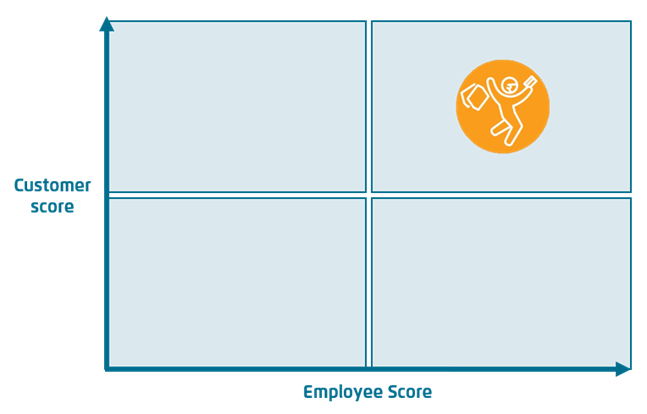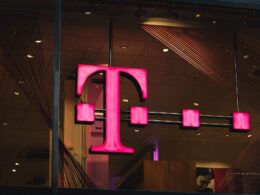It may seem strange, but Customer Engagement (CE) is a relatively new concept in marketing, only a couple of decades old.
The idea that the intensity of connection to your brand varies by customer became important as relationship marketing became important; customer-centric companies began outperforming product-centric organizations at roughly the same time social media made it impossible for brands to hide from public scrutiny. This may also explain why customer engagement is not defined in narrow purchasing terms, but includes activities that are not transactional, such as endorsements, word-of-mouth promotion, cross-buying and active feedback.
There is growing evidence that purchasing behavior is related to the intensity of customer engagement, with engaged customers showing a stronger preference for premium products and lower price sensitivity and proving to be more profitable than non-engaged customers. They also add value by facilitating customer acquisition for you through word-of-mouth recommendation. One study found “…that 48 percent of the respondents engaged (i.e. received a score of 3 or more [of 5]) with an Apple product did not actually own the product.”1
So, companies are designing programs that have the goal of engaging customers, not just selling to them. We will examine what these should look like if you want to achieve positive engagement (and sales) results.
Customer Engagement score
Customer Engagement is important for another reason; it allows you to segment customers by their level of engagement with your brand/program and use low engagement segments as control groups to accurately calculate the incremental value generated by your marketing investments, your Return on Loyalty®. We recommend our clients develop engagement scores for each customer, using measures of interaction that are not sales value driven. These scores help direct investments to those customers most likely to respond positively to your programs, avoid waste and help preserve whatever attention capital you have with other customers. Scores can be derived from a range of observable customer behaviors, online & offline, that position individual customers on the CE continuum2.
The model we like for customer engagement3 acknowledges that there are some complex drivers of customer engagement that marketers should consider. Some are physical (convenience), some are individual personality differences among customers, what your brand stands for is relevant and some go along with the nature of the business involved. For example, high involvement healthcare generates higher levels of customer engagement than grocery retail in research populations4.
Customer engagement is seen as a better predictor of loyalty related behaviors than other conventional quality ratings or satisfaction scores, which fail to capture the depth of relationships consumers form with some brands.
At least two surveys, tested for validity and reliability, have been published that measure customer engagement levels. These may be useful to companies with sparse customer data5. We are not aware of widespread use of these tests, however, as NPS seems to have absorbed most of our customer experience attention.
What are the surveys trying to measure?
The 2014 version has scales for customers’,
- Conscious Attention: The interest the person has in interacting with the brand.
- Enthused Participation: The zealous reactions and feelings when using or interacting with brand.
- Social Connection: How including others enhances the interaction.
The 2016 instrument measures customers’ self-reported engagement by looking at
- Referrals,
- Knowledge Sharing and
- Active Influencing of others.
to place organizations into a 2×2 matrix from HH to LL on the two axes that include employee engagement as a driver…
Effective Customer Engagement
What are the characteristics of an effective customer engagement-increasing initiative? They include;
- Dialogue. Participation by all parties, emphasizing flexibility, interactivity. The Domino’s ‘Pizza Turnaround’, an active listening and testing initiative to improve their product and experience used social & direct feedback channels. It helped take Domino’s stock price from $9 to $160 between 2009 and 2016.6
- Facilitation, not instruction. Effective marketing programs avoid leading, and instead facilitate participation, involving consumers in creating and carrying out the initiative. Sephora’s Beauty Insider encourages customers to work with beauty advisers on their ‘look’.
- Authenticity. The program must be genuine and not simply a ploy to sell products. Patagonia encourages direct customer to customer experience sharing, Decathlon offers a second-hand marketplace for customers to recycle products, at a real cost to their own sales.
- Relevance. Information which is useful or pertinent to the decision-making process. Trip Advisor popularized the rating and comments of peer travelers, heightening the relevance of their service.
And look for individuals who have;
- High interest in new experience-seeking.
- Are looking for meaningfulness in an organization’s program(s).
- Believe the program is psychologically safe, they will not be made to look foolish.
- Are psychologically available to your program, have an interest in what you have to say.
As Vivek et al state, “Those CE programs that are more successful in terms of customer connections and loyalty, as well as sales and positive word of mouth , will tend to involve more organizational efforts at facilitation or allowing the customer to be involved in the creation of the program, as well as making sure the programs are more authentic, relevant, and involve successful dialogue between the parties based on how the consumer wishes to communicate. Further, individuals are more likely to engage in programs if they are experience-seeking, feel psychologically safe about the program, perceive the program to be meaningful, and feel psychologically available to engage with the program or organization.”7
Get all these things in balance and you have a good chance of building strong levels of customer engagement.
More customer loyalty and better financial performance are the prizes, but you also gain the ability to measure relationship returns and better deploy marketing resources.
But like many of the lessons we are learning in Marketing, the opportunity to engage customers at all, varies by the category of products / services you work with.
Three types of loyalty/engagement
Australian researchers8 looked at “…established repeat-purchase markets where there is direct competition between branded products and services…” such as packaged goods, banking and travel agents, food and beverages, hotels, retail, OTC pharmaceuticals, basic cosmetics etc. They propose that customer loyalty/engagement comes in three types;
- Loyalty is an attitude that leads to a relationship with the brand.
This is the model that aligns with the concept of customer engagement, ‘attitudes drive behavior’ is the principle underpinning the concept. However, they caution; ‘…thought to be less applicable for understanding the buying of low-risk, frequently-purchased brands, or when impulse buying or variety seeking is undertaken, than for important or risky decisions.” - Loyalty is revealed in behavior.
Customers are neither monogamous, or completely promiscuous but are polygamous, with a collection of brands they happily substitute for promotions or convenience. The researchers contend this describes the majority of customers in these categories, “The consumer buys the same brand again, not because of any strongly-held prior attitude or deeply-held commitment, but because it is not worth the time and trouble to search for an alternative.” - Buying is determined by the customer’s whim, circumstances, or the purchasing situation.
Budgets, time pressure, habit, stock unavailability, promotions are the reasons why customers buy or buy again.
Only the first of these ‘reasons for loyalty’ offers opportunities to influence customers through engagement strategies in these low-risk frequent purchase categories. And customers with this attitude are rare. The other two classes of customer respond better to promotion, display, availability improvements. We recommend again, that you start your customer engagement strategy by first determining what portion of your customers are available for engagement with your brand or category – if you offer a free concert will they turn up?
This article originally appeared in Ellipsis & Co. Photo by Karsten Winegeart on Unsplash.














4 comments